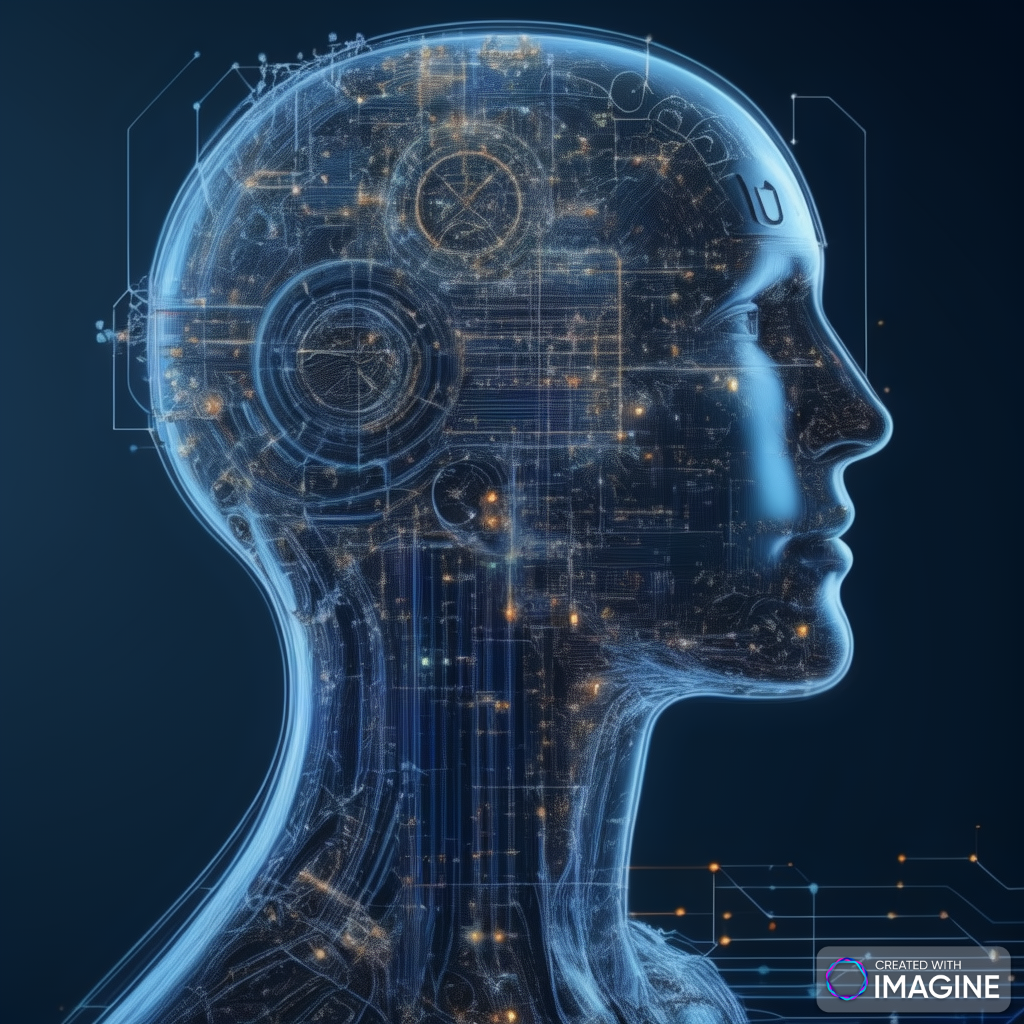Exploring John McCarthy’s Seminal 1958 Paper: “Programs with Common Sense”
In the landscape of artificial intelligence (AI), few figures are as foundational as John McCarthy. Often hailed as one of the fathers of AI, McCarthy’s contributions have been instrumental in shaping the field. One of his most influential works is the 1958 paper titled “Programs with Common Sense,” a pioneering effort that laid the groundwork for what would eventually become a vast area of research in AI.
The Genesis of AI Thought
John McCarthy’s vision in the 1950s was revolutionary. He foresaw the potential for machines to exhibit human-like reasoning and problem-solving abilities. His paper “Programs with  ” was a bold step towards this vision. McCarthy’s goal was to create a program that could replicate human common sense reasoning—a daunting task considering the complexity and nuance of human thought.
” was a bold step towards this vision. McCarthy’s goal was to create a program that could replicate human common sense reasoning—a daunting task considering the complexity and nuance of human thought.
Key Concepts in “Programs with Common Sense”
McCarthy introduced the idea of the “advice taker”, a program designed to accept and act upon human-provided advice. This concept was innovative for several reasons:
- Knowledge Representation: McCarthy proposed a way to represent knowledge that could be easily manipulated by a computer program. He suggested using formal logic as a medium for representing facts about the world, enabling the program to infer new knowledge from existing information.
- Logical Reasoning: The paper emphasized the importance of logical reasoning. McCarthy argued that a program should be able to draw logical conclusions from the data it possesses, much like humans do when faced with new situations or problems.
- Flexibility and Learning: The advice taker was envisioned to be flexible, capable of learning from new information and updating its knowledge base accordingly. This adaptability is a cornerstone of what we now consider artificial intelligence.
Impact and Legacy
The impact of McCarthy’s work cannot be overstated. “Programs with Common Sense” introduced several ideas that are now fundamental to AI:
- Formal Logic and AI: The use of formal logic for knowledge representation became a key area of research. McCarthy’s work laid the foundation for later developments in logic programming and automated theorem proving.
- Knowledge-Based Systems: The concept of an advice taker evolved into more sophisticated knowledge-based systems and expert systems, which were particularly prominent in the 1980s and 1990s.
- AI Research Directions: McCarthy’s ideas influenced a wide range of AI research, from natural language processing to robotics. His emphasis on common sense reasoning continues to inspire AI researchers to develop systems that can understand and interact with the world more naturally.
Modern Reflections
Today, McCarthy’s vision of programs with common sense is more relevant than ever. While we have made significant strides in AI, creating machines with true common sense remains an ongoing challenge. Modern AI systems, such as those used in natural language processing and autonomous vehicles, still grapple with understanding and reasoning about the world in a human-like manner.
Recent advances in machine learning, particularly deep learning, have brought us closer to McCarthy’s dream. However, these systems often lack the robustness and adaptability of human common sense. Researchers are continually working to bridge this gap, exploring new approaches to knowledge representation, reasoning, and learning.
Conceptual Framework and Innovations
1. The Advice Taker Concept
McCarthy’s “advice taker” was an early conceptual model for AI that could accept, process, and act on human advice. Unlike contemporary AI, which often relied on hardcoded instructions, the advice taker was designed to be dynamic, able to integrate new information and update its behavior accordingly. This was a significant leap towards creating flexible and adaptive AI systems.
2. Logical Foundations
A major innovation in McCarthy’s paper was the formal use of logic to represent knowledge. He proposed predicate logic as a means to encode information about the world. This logical framework allowed the advice taker to perform deductive reasoning, drawing inferences and conclusions from a given set of premises. This logical approach laid the groundwork for the development of later AI systems that rely on symbolic reasoning.
3. The Representation of Knowledge
McCarthy emphasized the need for a robust system to represent facts, relationships, and rules. This knowledge representation was crucial for enabling the advice taker to understand and reason about the world. The representation had to be flexible enough to accommodate new knowledge and sophisticated enough to enable complex reasoning processes.
Influences on AI Development
1. Birth of Knowledge-Based Systems
The ideas presented in “Programs with Common Sense” spurred the creation of knowledge-based systems, which became prominent in the 1980s. These systems utilized extensive databases of expert knowledge to solve specific problems within domains like medicine, geology, and engineering, effectively becoming practical implementations of McCarthy’s theoretical concepts.
2. Evolution of Automated Reasoning
McCarthy’s emphasis on logical reasoning influenced the field of automated reasoning, where AI systems are developed to automatically prove theorems and solve logical problems. This has applications in verifying software and hardware correctness, among other areas, demonstrating the lasting impact of McCarthy’s logical approach.
3. Foundations for Natural Language Understanding
Although McCarthy’s paper primarily focused on logic, its principles have influenced natural language processing (NLP). Understanding and generating human language requires a system that can handle ambiguity, context, and inference, all of which are grounded in the logical reasoning principles McCarthy advocated.
Modern AI and Common Sense Reasoning
1. Current Challenges
Despite advances in AI, creating systems with true common sense remains a significant challenge. Modern AI, often driven by machine learning, excels in pattern recognition but struggles with understanding context and making commonsense judgments. McCarthy’s vision highlights the gap between current AI capabilities and the goal of achieving genuine human-like reasoning.
2. Integrating Symbolic AI and Machine Learning
Recent trends in AI research are exploring the integration of symbolic AI (inspired by McCarthy’s work) with machine learning. This hybrid approach aims to combine the strengths of both paradigms, using machine learning for perception and pattern recognition, while leveraging symbolic reasoning for decision-making and understanding.
3. Advances in Knowledge Graphs
Knowledge graphs, which represent information in a network of entities and their relationships, are a direct descendant of McCarthy’s ideas on knowledge representation. These structures are crucial for modern AI applications like search engines and recommendation systems, enabling them to infer new knowledge from existing data.
Legacy and Future Directions
1. Enduring Influence
McCarthy’s paper continues to inspire AI researchers. His vision of machines that can reason about the world in a human-like manner is a guiding principle in the ongoing quest to develop more intelligent and intuitive AI systems.
2. Ethical and Philosophical Implications
The pursuit of  in AI also raises ethical and philosophical questions about the nature of intelligence, the relationship between humans and machines, and the potential for machines to understand and emulate human values and decision-making processes.
in AI also raises ethical and philosophical questions about the nature of intelligence, the relationship between humans and machines, and the potential for machines to understand and emulate human values and decision-making processes.
3. Future Research Directions
Future research inspired by McCarthy’s work is likely to focus on enhancing AI’s ability to understand context, reason about cause and effect, and make decisions based on incomplete or ambiguous information. These are critical components for developing AI that can operate autonomously in complex real-world environments.
In-Depth Analysis of John McCarthy’s 1958 Paper: “Programs with Common Sense”
John McCarthy’s 1958 paper “Programs with Common Sense” is a landmark publication in artificial intelligence (AI), establishing foundational concepts that continue to influence contemporary research. This analysis delves deeper into McCarthy’s innovative ideas and their long-lasting impact on the field of AI.
Advanced Knowledge Representation
1. Semantic Networks
McCarthy’s work paved the way for the development of semantic networks, which represent knowledge as a graph of interconnected nodes. Each node symbolizes an entity or concept, and the edges denote the relationships between them. This method allows for more dynamic and intuitive knowledge retrieval and has been utilized in various AI applications, including natural language processing and data mining.
2. Frame-Based Systems
Building on McCarthy’s concepts, frame-based systems were introduced to structure knowledge in AI. Frames are data structures for representing stereotyped situations, like an office or a birthday party, providing AI programs with context-specific information. These systems have been crucial in enabling AI to understand and navigate complex, real-world scenarios.
Theoretical Contributions
1. Situation Calculus
McCarthy’s influence extended to the creation of situation calculus, a mathematical model for representing dynamic worlds. Situation calculus is used to formalize the effects of actions, facilitating reasoning about changes over time. This has been particularly important in robotics and planning, where AI must predict and respond to the evolving state of the world.
2. Circumscription
McCarthy also introduced the concept of circumscription in AI, a form of non-monotonic reasoning. This logical formalism helps AI systems deal with incomplete information by assuming that what is not currently known to be true is false. Circumscription has applications in automated reasoning and commonsense knowledge representation, aiding systems in making assumptions about the world.
Practical Implementations
1. Expert Systems
The principles outlined by McCarthy led to the development of expert systems in the 1970s and 1980s. These systems leverage extensive knowledge bases and inference engines to provide expert-level solutions in specific domains, such as medical diagnosis and financial analysis. They embody the early vision of the advice taker by integrating new information to refine their knowledge and decision-making processes.
2. Rule-Based Systems
Rule-based systems are another practical application inspired by McCarthy’s work. These systems use sets of “if-then” rules to derive conclusions or actions. They have been widely used in AI applications ranging from simple decision-making tools to complex industrial control systems.
Cognitive Architecture and Human-Like Reasoning
1. SOAR and ACT-R
McCarthy’s ideas significantly influenced the development of cognitive architectures like SOAR and ACT-R. These architectures aim to model human cognitive processes, providing frameworks for understanding and replicating human reasoning and decision-making in machines. They incorporate mechanisms for learning, memory, and problem-solving, closely aligning with McCarthy’s vision of AI with common sense.
Conclusion
John McCarthy’s “Programs with Common Sense” stands as a testament to the foresight and ingenuity of one of AI’s great pioneers. His ideas continue to resonate, guiding researchers in their quest to build intelligent systems that can truly understand and navigate the complexities of the real world. As we celebrate the advances in AI, it’s essential to acknowledge and reflect on the foundational work that has brought us to where we are today. McCarthy’s vision of imbuing machines with common sense remains a guiding star for the future of artificial intelligence.




